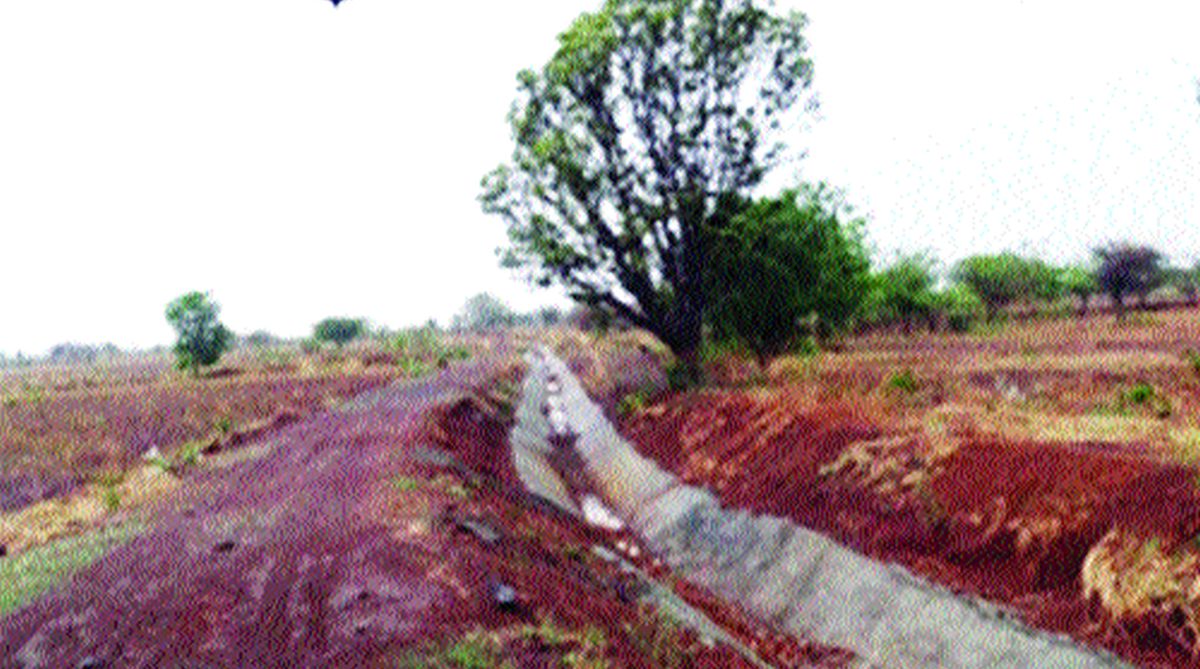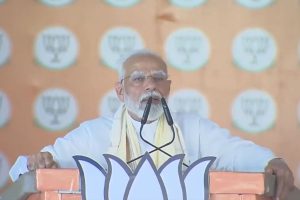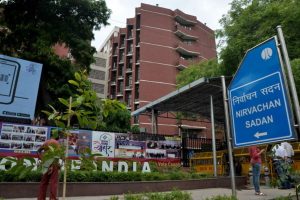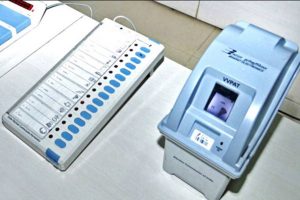Bountiful rainfall or above normal rainfall is always a matter of euphoria for Indian agriculture. Because the expect on from such bountiful rainfall are larger net sown area, increased irrigation potential, higher crop productivity, bumper harvest, higher farmer income, lower inflation and a big boost to rural and national economy.
But bountiful or above normal rainfall can be deceptive. This is because contrary to expectations, bountiful rainfall doesn’t always mean water to all farms and farmers in the irrigated lands. The reality could be different due to anumber of invisible factors existing in India’s irrigated agriculture.
In fact, rains may not be transforming into water to all farms and farmers leading to irrigation gaps. The irrigation gaps are invisible and so are lower net sown areas, lower irrigation potential, lower crop productivity, lower farmer income and farmer suicides, all of which gets blindsided by the euphoria of higher rainfall.
According to the erstwhile Planning Commission, irrigation gap exists between irrigation potential created (IPC) and irrigation potential utilisation (IPU) in its vast irrigated lands or canal command areas (IPC means the total gross area proposed to be irrigated under different crops in a year; and IPU is the gross area actually able to be irrigated in the same year)
At the end of the Xth Plan, India’s irrigation potential created (IPC) from major/medium projects stood at 41.64 mha as against the irrigation potential utilisation (IPU) of 33.74 mha with an IPC-IPU gap of 7.90 mha. This is according to the working group of the erstwhile Planning Commission. There is no data after the Xth Plan; but the gap is widening, says the Government of India. Studies conducted by four Indian Institutes of Management identified wide ranging causes for this widening irrigation gap.
Some of them are lack of operation and maintenance of the canal network by project authorities under state governments, incomplete distribution system, non?completion of command area development works, changes in cropping pattern, and diversion of irrigated land to other purposes.
Irrigation canal commands are vast and run into thousands of square kilometers. The canal network consists of main canals with higher discharge capacity, taking off from dam headworks. The main canals alone cannot distribute water to all parts of the command area.
So, there are distributaries of smaller discharge capacities that possess outlets at planned intervals along their length. From the outlets, the field irrigation channels (FICs) having lowest discharge capacity carry water to all farms in the command area. So, in any irrigation land, it is the FICs that function as arteries transporting water from the outlets of main canal/distributaries to individual farms across the command area.
The length of the canal network, including FICs,runs into thousands of kilometers with FICs possessing the longest length. The canal network in India, from the main canal to FICsis concrete-lined in order to avoid seepage of water into the ground and to maintain the design discharge so as to deliver water to the remotest corners of the command area.
Generally, the canal commands in India are not criss-crossed with highways or well-laid roads or even service roads. The terrain is harsh and full of jungles. There are no proper service roads even to approach and move along the main canals or distributaries.
At best, there could beearthen roads built across major canals that are rarely conducive for a four-wheeled vehicle. As far as FICs are concerned, it is difficult to even move by foot. So, it is absolutely impossible to verify every part of the canal network and validate the irrigation potential creation and irrigation potential utilisation due to spatial constraints.
Then, due to the expanse and inaccessible terrain, it is impossible to verify and validate main canals, distributaries and FICs within a span of a week or even a month. So, a visit to a project for a day or two reveals nothing about the potential utilisation. The fact that the canal network in a vast command area is difficult to monitor due to spatial and temporal constraints gives enough room for vested interests to manipulate, evade accountability and hide the ever-widening irrigation gap and the resulting consequences on farmers’ lives.
These constraints serve as excellent opportunities for irrigation bureaucracies to evade scrutiny by any of the institutional checks and balances that exist at present.
Therefore, any data/statistics pertaining to IPC and IPU are suspect and any statistical blitz pertaining to success of irrigation potential utilisation by vested interests could be false. In large parts of the 41.64 mha of canal commands, the IPU may be overstated or may not exist or exist only on paper!
In the XIIth Plan (2012-2017), to stem and reverse the widening irrigation gap, Government of India revamped earlier schemes of Accelerated Irrigation Benefit Program (AIBP), Command Area Development and Water Management (CAD&WM), Watershed Management and launched PradhanMantriKrishiSinchaiYojana (PMSKY) in 2016.
This scheme envisaged higher water use efficiency, HarKhetKoPani, “Per Drop More Crop” in the irrigated commands.
But the current policy discourse seems to rely on the false premise that the irrigation gap can be closed by “funds”. That too inadequate funds!
In canal irrigation, concrete lining of the canal network, (particularly for the FICs connecting outlets to farms), is the very important engineering intervention to stop seepage of water from the sides and bed of canals. Therefore, arresting seepage is a strategy to achieve higher water use efficiency.
But, in large parts of irrigated lands, the FICs are bereft of any concrete lining precisely due to paucity of funds, lethargy of the irrigation bureaucracy and/or corruption entrenched due to lack of accountability arising out of spatial and temporal constraints to data collection and validation.
The current level of funding under various schemes is sufficient to line the FICs with concrete only up to one-third of their length, say some project authorities on condition of anonymity, and the balance two-thirds are left unlined or in excavated condition across a vast command area.
These unlined/excavated FICs disappear in just one monsoon season due to filling of soil by rains or tilling by farmers or due to their incapability to maintain them. With the disappearance of FICs as well as poor maintenance of other parts of the canal network, water use efficiency plummets and water fails to reach the majority of the farms leading to failure of Har Khet Ko Pani.
Thus, there could be bountiful monsoons in the catchment area, but this does not mean water to the irrigated lands. While policy makers find it expensive for governments to construct and maintain FICs, they wrongly assume that poor and marginal farmers possessing landholdings of less than 1 ha are fully capable to construct, line and maintain these FICs under Water user associations (WUA).
In reality, farmers in India are so diverse that they do not belong to one culture, sect or tradition, or belong to one religion, caste, language and dialect even within an irrigation project. They aren’t loyal to any single political affiliation. Tail-end farmers do not trust the farmers in head reaches.
So, it is naïve on the part of policy makers to expect fully functional WUAs to plug the irrigation gap, construct FICs, line the FICs with concrete, and maintain them through their own funds. Therefore, one of the oldest government schemes, namely CAD&WM makes such a flawed assumption that water users are capable enough to maintain thousands of kilometers of FICs.
Lack of irrigation is attributed as one of the causes of poor agricultural performance and suicides in the farm sector. However, attention has been successfully diverted by policy makers towards rainfed areas instead of the heavily invested large canal command areas of major/medium irrigation projects existing with dilapidated or non-existent irrigation infrastructure.
In fact, India’s failure to deliver water in time in adequate quantities to every small landholding (< 1 hectare) belonging to marginal farmers (constituting 85 per cent of total farmers) cultivating in 43.64 million hectares (mha) of canal irrigated commands never finds mention in any of the suicide records and agriculture performance discourse.
The point is that the area under dilapidated and non-existent irrigation infrastructure within the 43.74 mha of the canal command area is never disclosed and therefore remains largely invisible to the nation.
The impact of this great Indian irrigation deceit is enormous on agriculture performance. The failure to deliver water in time, despite bountiful monsoons, leads to low water use efficiency, loss of crops, variation in crop productivity and rising costs thereby straining the financial position of the farmers and leading to distress. Indian agriculture contributes 16 per cent to GDP.
With over 50 per cent of the workforce employed in agriculture sector, it supports livelihoods of 55 per cent of India’s population (about 700 million). Therefore, poor agricultural performance, farmer distress and inflation, possess larger political and social ramifications, all of which can hold back the Indian economy.
Bountiful monsoons don’t mean bountiful water to all parts of the irrigated lands of India. This is due to the ever-widening irrigation gapprecisely due to flawed assumptions of various irrigation polices, schemes and programmes, spatial and temporal constraints, lack of transparency, deficiencies and drawbacks arising out of lack of accountability in the canal command area.
The sooner governments acknowledge the deficiencies of irrigation sector, apply remedial measures to policies and schemes and make a turnaround in the canal command areas, the better it will be for farmers, agriculture sector, the Indian economy and the nation.
Therefore, unless irrigation schemes in India are conceived with honesty and transparency reflecting the ground realities, they will continue to be disastrous to the agriculture sector. Farmers and their families face distress for reasons that remain hidden from public gaze.
The writer is Director, Central Water Commission, Government of India. The views expressed are personal.











